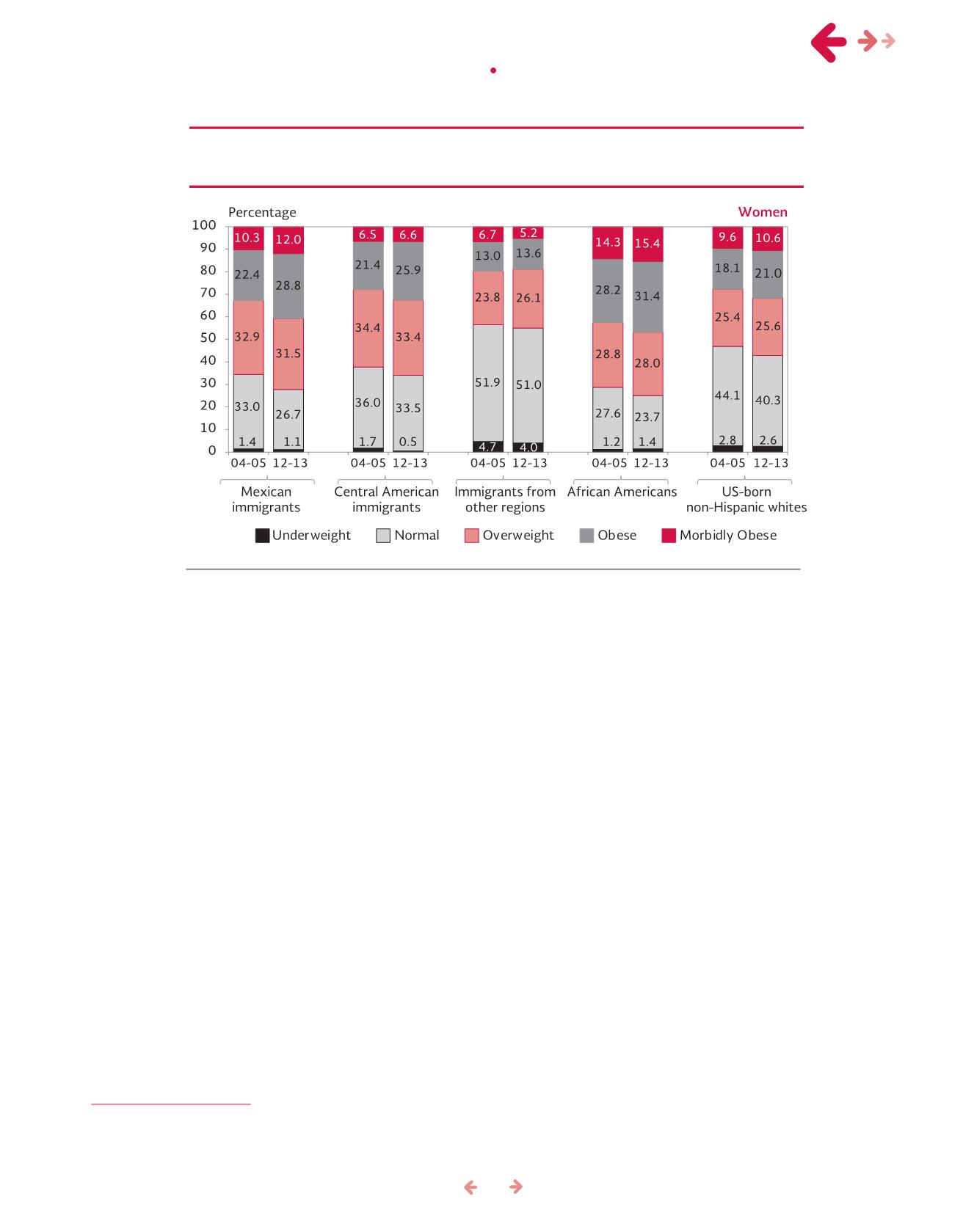
57
Mexicanadults remain thegroupwith
thehighest rateof physical inactivity
Physical activity can reduce the risk of many illnesses
and improve theoutcomesofsomeof thoseconditions.
Changes in technology and working conditions have
fostered more sedentary lifestyles, with brief periods
of physical activity. Physical inactivity is thus the fourth
highest risk factor ofmortalityworldwide (ss, 2012c).
1
Though the percentage of persons engaging in
physical activity increased between the two periods,
Mexicans had the highest levels of inactivity during
the period 2012-2013 (39.7%) (Figure 42). How-
ever, Mexicans saw the most significant decrease in
sedentary lifestyle (16.4%), over twice that recorded
among non-Hispanic US-born whites (7%). A com-
parison of the percentage of Mexican population and
the US-born population without physical activity by
1
Here the definition of engaging in physical activity is taking part at least
onceaweek inmoderate, vigorousor heavyactivities.
gender follows the same pattern. For example, during
2012-2013, 39%ofMexicanmen and40%ofMexi-
canwomen did not engage in regular physical activity,
while non-Hispanic US-born whites reported percent-
ages of 24% and 28%, respectively (Figure 43). Im-
portantly, Mexicans have an extremely low tendency
to engagephysical activity, which, aswill be examined
later, is reflected in higher levels of obesity and diabe-
tes for bothgenders.
Alcohol abuseand tobaccoare important
preventible causes of illness anddeath
Alcohol and cigarette abuse are risk factors that can
also be modified. These habits are linked to each
other and other chronic diseases. Excessive alcohol
use is a direct cause of risk behavior, accidents and
severehepaticdiseases suchascirrhosis (Guerrero
et
al
., 2013). Cigarette use is a risk factor responsible
for cardiovascular illnesses, diseases of the oral ca-
vity, saliva glands and jaw, buildup around the teeth
Note:
*Underweight: BMI<18.5; Normal: BMI >=18.5and<25.0; Overweight: BMI >=25.0and<30.0; Obese: BMI
>=30and<40.0:MorbidlyObese: BMI >=40.0.
Source: EstimatesbyCONAPO, basedon the
National Health InterviewSurvey
(NHIS), 2004-2005, 2012-2013.
Figure40. Populationover age18 living in theUnitedStates, by bmi Category*,
basedon regionof originandethnicityor race, 2004-2005and2012-2013
chapter i i i •
risk factors and health conditions


